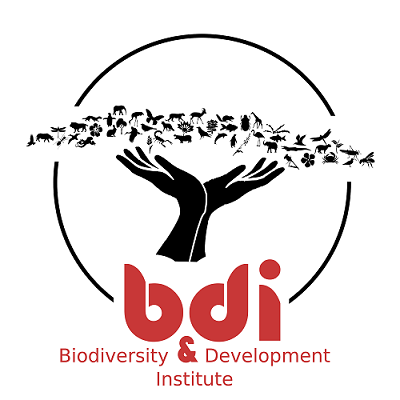Cover photo by Ryan Tippett.
Find the Eastern Duskhawker in the FBIS database (Freshwater Biodiversity Information System) here.
Family Aeshnidae
Identification

Near Kosi Bay, KwaZulu-Natal
Photo by Ryan Tippett
Very Large
Length up to 78mm; Wingspan attains 103mm.
At first glance the Eastern Duskhawker is rather drab and cryptically coloured. This is especially true of females, however, males are fairly colourful when seen in good light. Males have a green thorax and a small, cobalt-blue saddle on the second abdominal segment. The rest of the abdomen is dark brown. Females are similar but duller and with a reduced amount of blue on the saddle.
The key distinguishing features of the Eastern Dusk-hawker include the small blue saddle, plain green thorax, three-celled anal triangle and 21-27 Ax veins in the forewing.
The Eastern Duskhawker is most easily confused with the Little duskhawker (Gynacantha manderica) The Little Duskhawker is smaller and predominantly brownish rather than green. The Eastern Duskhawker may also be mistaken for the Brown Duskhawker (Gynacantha villosa), but that species is larger, lacks any bright colouration, and has a four-celled anal triangle.
Click here for more details on identification of the Eastern Duskhawker.

Amatikulu Nature Reserve, KwaZulu-Natal
Photo by Ryan Tippett
Habitat
The Eastern Duskhawker is a forest-dwelling species of coastal areas. It inhabits various forest types such as coastal, dune, and especially swamp-forest. It is also found in mangroves. This species breeds at forested lakes, ponds, streams, and rivers.

Kosi Bay, iSimangaliso Wetland Park, KwaZulu-Natal
Photo by Ryan Tippett
Behaviour
The Eastern Duskhawker is a crepuscular species that rests during the day in the deep shade of low undergrowth. It hangs from a perch when at rest. If flushed, it does not fly far before settling again. Emerges at dusk to hunt in clearings and along roads and pathways. The Eastern Duskhawker frequently joins other dragonflies in mixed species hunting swarms at dusk. It hunts on the wing and has a smooth, fast flight. They may forage around tree tops or low to the ground, as it patrols back and forth along a selected route.
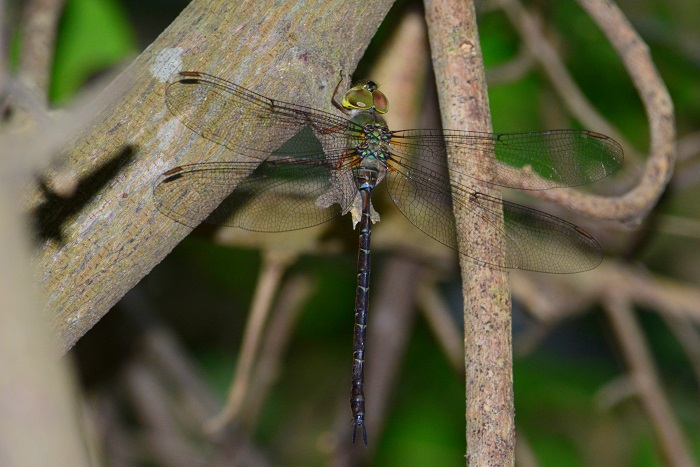
Near Kosi Bay, KwaZulu-Natal
Photo by Ryan Tippett
Status and Conservation
The Eastern Duskhawker is fairly common but localised, along the coastal plain of KwaZulu-Natal. It is listed globally as of Least Concern in the IUCN Red List of Threatened Species. The Eastern Duskhawker is however, listed as Vulnerable in South Africa due to pressure placed on its habitat by urbanisation and agriculture. Gynacantha usambarica is confined to indigenous forests and is intolerant of habitat degradation.
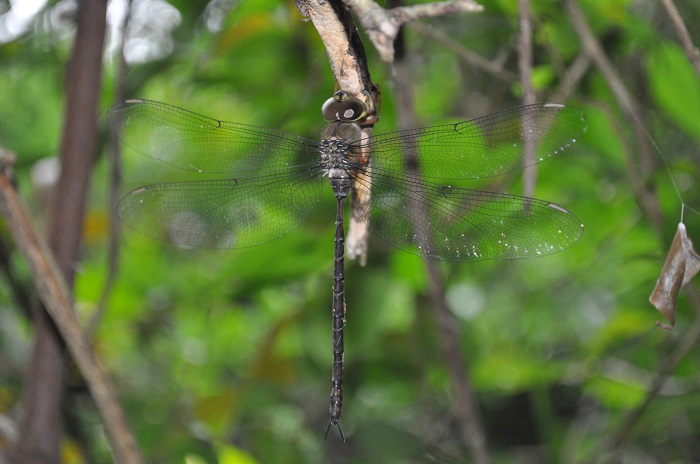
Near Kosi Bay, KwaZulu-Natal
Photo by Ryan Tippett
Distribution
The Eastern Duskhawker is confined to Eastern and Southern Africa. It occupies a narrow strip along the coastal plain from Kenya down to South Africa. It has also been recorded in Malawi, but in general, is seldom found far from the coast.
In South Africa the Eastern Duskhawker occurs along the length of the KwaZulu-Natal coast, marginally reaching the Eastern Cape at Port St. Johns.
Below is a map showing the distribution of records for Eastern Duskhawker in the OdonataMAP database as of February 2020.

Below is a map showing the distribution of records for Eastern Duskhawker in the OdonataMAP database as of December 2024.
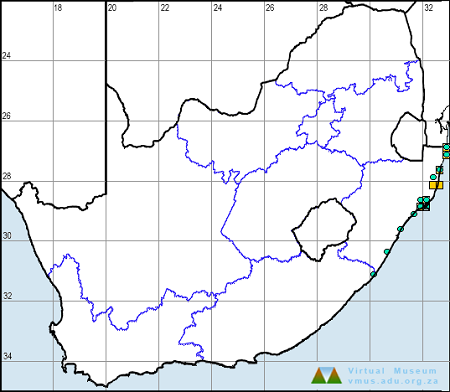
The next map below is an imputed map, produced by an interpolation algorithm, which attempts to generate a full distribution map from the partial information in the map above. This map will be improved by the submission of records to the OdonataMAP section of the Virtual Museum.


Ultimately, we will produce a series of maps for all the odonata species in the region. The current algorithm is a new algorithm. The objective is mainly to produce “smoothed” maps that could go into a field guide for odonata. This basic version of the algorithm (as mapped above) does not make use of “explanatory variables” (e.g. altitude, terrain roughness, presence of freshwater — we will be producing maps that take these variables into account soon). Currently, it only makes use of the OdonataMAP records for the species being mapped, as well as all the other records of all other species. The basic maps are “optimistic” and will generally show ranges to be larger than what they probably are.
These maps use the data in the OdonataMAP section of the Virtual Museum, and also the database assembled by the previous JRS funded project, which was led by Professor Michael Samways and Dr KD Dijkstra.


Further Resources
All photographs by Ryan Tippett.
Eastern Duskhawker Gynacantha usambarica Sjöstedt, 1909
Other Common Names: Usambara Duskhawker (Alt. English); Oostelike Skemerventer (Afrikaans).
Recommended citation format: Loftie-Eaton M; Navarro R; Tippett RM; Underhill L. 2025. Eastern Duskhawker Gynacantha usambarica. Biodiversity and Development Institute. Available online at https://thebdi.org/2020/05/25/eastern-duskhawker-gynacantha-usambarica/
References: Tarboton, M; Tarboton, W. (2019). A Guide to the Dragonflies & Damselflies of South Africa. Struik Nature.
Samways, MJ. (2008). Dragonflies and Damselflies of South Africa. Pensoft
Samways, MJ. (2016). Manual of Freshwater Assessment for South Africa: Dragonfly Biotic Index.Suricata 2. South African National Biodiversity Institute, Pretoria
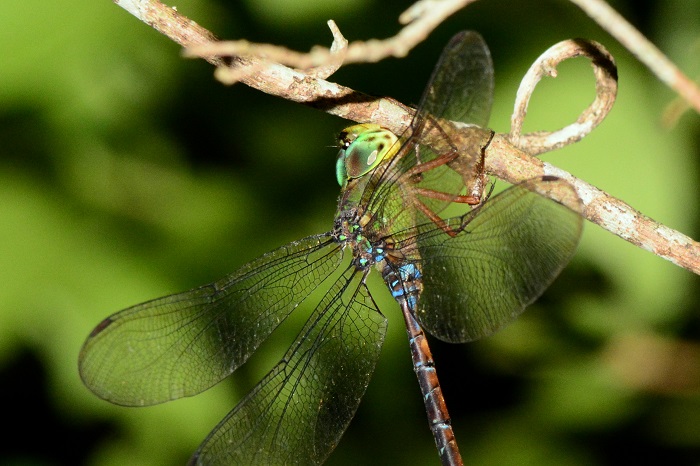
Near Kosi Bay, KwaZulu-Natal
Photo by Ryan Tippett
